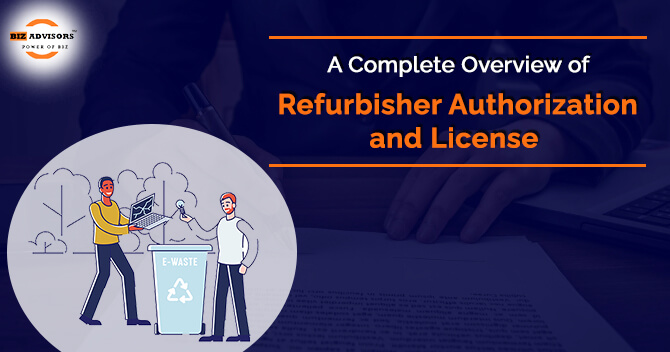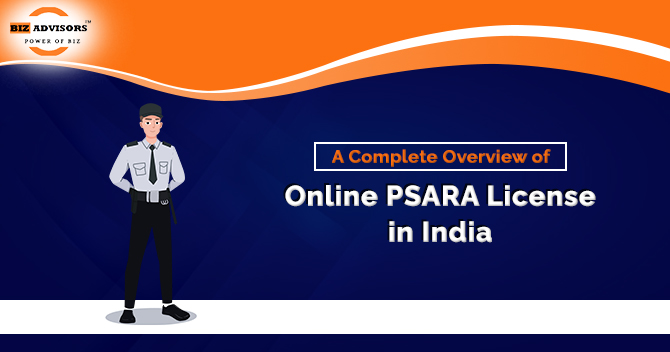Refurbisher Authorization and License play a crucial role in determining the operational management of e-waste materials on a broad scale. Refurbisher Authorization and License impart effective management of used electronic gadgets and their distribution across the nation with legal validation. It helps in maintaining effective environmental sustainability and fosters the progressive spirit of biodiversity functioning to a larger extent. Refurbisher Authorization and License systematically govern an efficacious structural framework of e-waste systemization in a well-organized format. It provides spontaneous support in escalating the potential of natural resources on a wide platform. Therefore, every person who operates quality control of utilized electronic products for enhancing their life span to confirm their potential and authenticity must have a Refurbisher Authorization and License. This blog intrinsically aims at providing a comprehensive approach to analyzing the basic nuances concerning Refurbisher Authorization and License in a detailed format.
Refurbisher Authorization and License
For a product to be distributed uniformly throughout the market, used for its intended function longer, or given back to the owner, an e-waste certificate is necessary. And this process can be only carried out if a person holds the Refurbisher Authorization and License.
Integrated circuit panels, wires, cathode ray tubes (CRTs), metal alloys, polymers, and other components are frequently found in e-waste. Copper, silver, gold, and platinum can be recovered if e-waste is managed correctly. Liquid crystal, lithium, mercury, nickel, polychlorinated biphenyls (PCBs), selenium, arsenic, barium, brominate flame retardants, cadmium, chromium, cobalt, copper, and lead are among the hazardous substances that can be found in e-waste when it is disassembled and handled crudely.
Who is a Refurbisher?
According to the E-Waste Management Rules, 2016, refurbishment is the process of enhancing the quality of used Electrical and Electronic Equipment (EEE) that is listed under Schedule I to extend their lifetime. A refurbisher is a person who is engaged in the full refurbishment of used electronic products.
Qualifying Standards Concerning Refurbishment Business in the Context of Refurbisher Authorization and License
As we all know, refurbishing electrical and electronic equipment has been demonstrated to be more profitable than recycling it because it not only decreases the amount of waste produced but also greatly enhances the product and lengthens the life of the equipment (EEE).
An individual must keep a few things in mind when starting a refurbishment enterprise in the context of Refurbisher Authorization and License: –
· The refurbisher must have enough room and land to store all of the electronic waste before beginning any work.
· A closed space should then be placed in the establishment by the renovator.
· Also, the refurbisher must have the working equipment required for the restoration process.
· The company also requires skilled personnel.
Duties of a Refurbisher in the Context of Refurbisher Authorization and License
A refurbisher is a person who works in the refurbishment industry. Because refurbishment is a step in the waste management process, the extended producer responsibility concept assigns some duties to the refurbisher.
Duties of a Refurbisher in the context of Refurbisher Authorization and License include:
· The refurbisher must collect objects that have generated electronic trash throughout the refurbishment process and deliver them to a recognized recycler or dismantler.
· By storing and moving E-waste, a refurbisher must certify to the state that their operations do not harm the environment.
· Following the year to which the return applies, the refurbisher must additionally submit an annual report to the relevant State Pollution Control Board by 30 June.
· The refurbisher is responsible for keeping the business operating and making sure that it doesn’t threaten the environment or the health of the general public.
· The refurbisher must also keep track of all E-Waste handled in Form-2 and make that information available for inspection by the proper authorities.
· Maintain tabs on how E-waste is handled, and the appropriate authority should review the paperwork.
While reconditioning used electrical and electronic equipment, malfunctioning parts must be eliminated or fixed. These broken electronic parts are what is known as e-waste. In addition, because reconditioning equipment is so expensive, some equipment might never be refurbished. E-Waste is another category for these things.
The Refurbisher must therefore dispose of the E-Waste by the E-Waste Management Regulations.
Essential Documentation concerning Refurbisher Authorization and License
The refurbisher must submit several attested documents when applying for a Refurbisher Authorization and License:-
· According to The Air (Prevention and Control Pollution) Act of 1981[1] and The Water (Prevention and Control Pollution) Act of 1981, the State Pollution Control Board granted consent to establish.
· The Air (Prevention and Control Pollution) Act of 1981 and the Water (Prevention and Control Pollution) Act of 1981 each granted permission to operate.
· DIC (District Industries Centre) or another appropriate organization may provide a registration certificate.
· Aadhar Card
· PAN Card
· GST Registration Certificate
· Electricity Bill of the Developed Business
· Structure
· Certificate of Incorporation (CIN)
· MOA (Memorandum of Association) [if necessary]
The process concerning Refurbisher Authorization and License
The process for requesting authorization from the State Pollution Control Board to refurbish electronic waste is governed by the E-Waste Management Act, of 2016.
The procedure entails filing an application, reviewing the application that has been submitted, and issuing the license.
· Application Filing: The Refurbisher must first register via the official online portal and complete Form-I (a) of the E-Waste (Management) Regulations, 2016, submitting it along with attested supporting documentation and the applicable fee.
· Submitting/Evaluating an Application: The State Pollution Control Board then assesses the application for authentication and verification. If the application is submitted with a mistake, it is returned for correction.
· Granting Refurbisher Authorization and License: Following final verification, approval, and NOC, the SPCB issues the license.
Conclusion
The aforementioned text imparts an unambiguous picture concerning Refurbisher Authorization and License. Refurbisher Authorization and License primordially also grants the refurbisher with certain responsibilities in accordance with uplifting the standards of the utilized electrical and electronic components. It provides a surcharged model of environmental welfare and also helps in maintaining a firm balance within the ecological diversity on a wide scale. Our legal specialists at BizAdvisors.io provide a robust support system in the context of assisting individuals to easily get services in consonance with the Refurbisher Authorization and License in a sophisticated manner. You can freely contact our legal consultants at BizAdvisors.io for any kind of professional advice or support in the context of the structural framework of Refurbisher Authorization and License.
Read our article:All You Need to Know About Land Waste Management
 9559179325
9559179325 9559179325
9559179325





